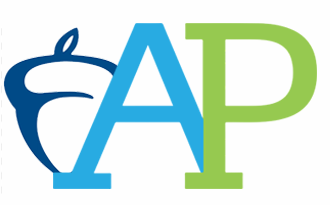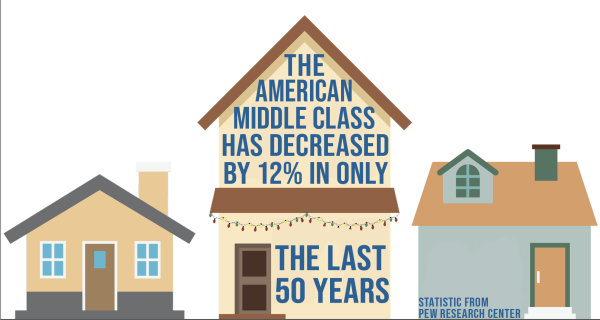AP vs Dual Credit

November 1, 2022
On Sep. 21, Oxford High School students attended a meeting led by staff from the Oxford School District College and Career Readiness department, along with several OHS administrators. At this meeting, all students enrolled in an AP course in the spring were fed discouraging information regarding their academic ability to excel in an AP course, with administrators citing higher workloads. Students were told that AP courses are difficult, that they would most likely fail the exam, and that dual credit courses would be able to provide them with a much more beneficial outcome. Later I learned that AP exams factor into our high school’s accreditation standards while dual credit courses do not have an exam to factor into the equation, which makes it advantageous for OHS administrators to push students away from AP and into dual-credit. This then begs the question: is it worth it to push students away from academically challenging courses, just to boost a superficial rating?
As a response to the widening gap between secondary schooling and college, AP classes were created around 70 years ago. With soaring increases in popularity, success in AP courses is now one of the strongest indicators of college readiness. Taking AP classes also signals to post-secondary institutions that you are serious about your education, assisting greatly in the highly selective college admissions process. While also helping students explore their passions at a younger age through specialized courses beyond just core subjects. With all the perks of the Advanced Placement program, OHS does little to nothing to promote these benefits and instead encourages students to navigate our high school coursework through the dual credit pathway. While one major goal of the OSD is to close the large achievement gap across all students, there is nothing done to educate students on the perks of advanced classes such as the AP program and help push the students who are more than capable of thriving in a more strenuous learning environment but are simply unaware of the option. The gap in achievement stems from home life and background, as those who have grown up with parents who place them in these classes are able to excel in the top of the achievement ladder, while those who are unaware of these options are left behind to do just the bare minimum to get by. This bare minimum is sadly encouraged, as the work ethic students have garnered in earlier grades has carried over to high school and no one has intervened along the way.
Entering high school, students are faced with the course path option: AP or dual enrollment. While both pose many advantages and disadvantages, students are now being instructed that the AP path is much more demanding and the dual enrollment pathway comes with much more ease and payoff regarding college credit. While a majority of the curriculum and pathway direction is aimed towards students attending an in-state institution, dual enrollment classes are encouraged. This being said, dual credit does provide many benefits for those who are sure that their path will take them to an in-state institution. Dual credit ensures that you will receive credit in college regardless without the additional factor of an exam.
However, for students who want to push themselves or have the promise to attend an out-of-state institution, whether public or private, AP classes will be much more widely accepted and regarded. If the aim was to push the high-achieving students to excel in rigorous classes to better prepare them for the difficulty of college and assist them in receiving good packages from out-of-state colleges, then we should be encouraging students to take AP classes. However, very little energy or focus is being placed on the students who want to excel, by closing the gap the top is only getting pulled down.
Research put out in a news release by the Mississippi Department of Education states that AP students are better prepared for college and more likely to graduate college in four years than non-ap students. This news release also states that Hispanic and African-American students achieved the greatest AP gains. Instead of working so hard to close the achievement gap by discouraging students from taking AP classes and applying more barriers such as passing benchmarks in the lower level classes, our school district should encourage students to take the classes that will push students and give them legitimate college preparatory instruction instead of working to benefit a rating for the school as a whole. When students aren’t given just the opportunity to succeed at higher levels but also the support to succeed, there are endless possibilities for a student’s academic success.
Not only is this movement telling students that they are not capable of passing the exam, but it is also telling teachers that they aren’t good enough to prepare students to pass. With statistics coming directly from the district providing evidence that students are more than prepared to succeed on these exams, such as 100% of A.P. Chemistry students scoring a 3 or higher or 91% of students scoring a 3 or higher on the A.P. English Literature Composition, teachers are clearly preparing their students for success. Students at Oxford High School are in fact succeeding on these exams as pass rates this last school year are the highest in history.
AP courses aren’t just a fancy class title but more importantly allow students to be better prepared for college-level work, stand out in admissions processes, and allow them to be more competitive for scholarships.
With the district moving towards a more uniform teaching policy for all core subjects, especially those with a state test involved, teacher autonomy is becoming increasingly limited. The movement towards standards-based learning is allowing the district to pursue its agenda of teaching for state tests and removing any creative license that teachers have in their classrooms. The movement towards this grading system isn’t reflecting the real world value of a student’s education. This system almost turns learning into a game, as there is no reason for students to try on an assignment that holds no true weight or a test that they know they can retake or replace. Similar to the idea of forming new classes in core subjects that require a state test for students who may struggle to pass it the first time, we are sending the entirely wrong message to all students as they prepare to enter the real world. We are telling students that instead of pushing themselves and being critical thinkers and resilient learners, we are sending the message that one can quit and get out of a situation when it becomes difficult. We are saying that one shouldn’t have to push themself and most importantly that when hard things come their way, quitting is an option.
One strong opposing argument to AP courses is the idea that when all of the high achievers are put in one place, a school within a school is forming and kids are quickly becoming isolated, and not able to learn from everyone. The alternative would be pushing all students to take these classes with adequate preparation and a strong safety net provided by the school, and then these classes can help to raise the quality of learning across all students.
We need to focus not just on the behavioral side of high school that OHS places so much emphasis on but also on the academic and character building side that has gotten so lost in translation. There is no success in life unless students can learn the skills of resilience and hard work, but with a school system that is actively discouraging students from taking the more difficult classes, these core principles will never be met.













